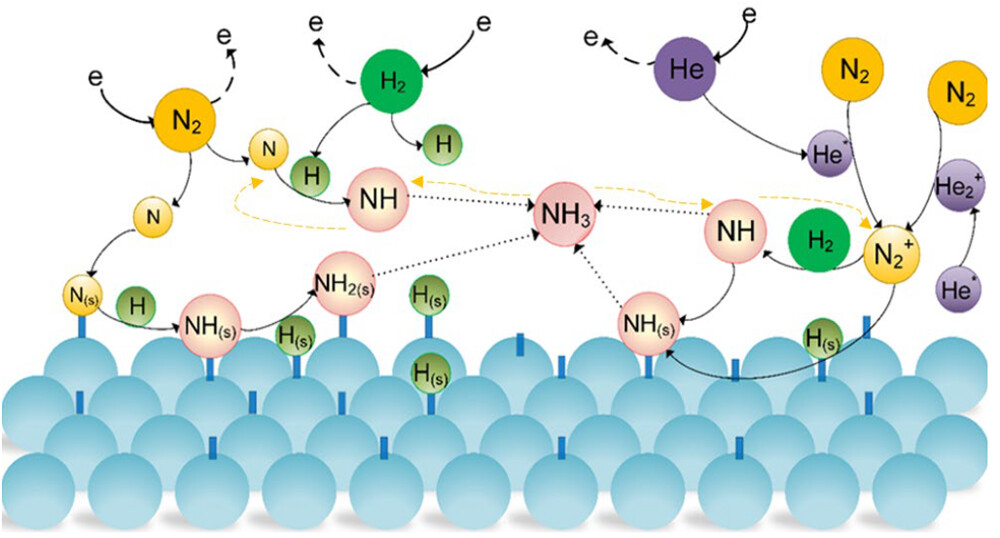
Researchers from the University of Sydney and Queensland University of Technology (QUT) in Australia have collaborated on a project to develop a more sustainable method for ammonia synthesis.
Ammonia synthesis is a critical process in the production of fertilisers and many other chemical applications. The Haber–Bosch process has been the dominant technology used for this purpose, which requires high temperatures and pressures, making it energy-intensive and costly. Plasma-driven ammonia synthesis is an attractive alternative, allowing decentralised and on-demand production at mild conditions. However, the high energy consumption required for the plasma synthesis of ammonia has been a major challenge.
Researchers have been working to improve the energy efficiency of plasma-driven ammonia synthesis by controlling the energy transfer to predominantly generate more reactive species instead of gas heating. In this regard, Helium (He) gas has been identified as a potential solution. He gas is widely used to assist the generation of stable nonthermal plasmas with reduced breakdown voltages and gas temperatures, and it enhances thermal conductivity and diffusion rates.
The team have developed a simple process of adding He to the feeding gas in coaxial dielectric barrier discharge (DBD) reactors packed with different catalysts or materials. The effect of different He additions on ammonia synthesis was studied, and the results showed that the energy yield increases with the addition of He and peaks at around 0.584 g-NH3/kWh with the gas ratio of He:H2:N2 = 1:1:2. The addition of He in the feed gas led to considerable increases in the NH3 energy yields, with the improvement of the energy yield increases with the content of N2 to over 100% at a He:H2:N2 ratio of 1:5.
Adding He provides extra nonreactive surfaces for gas-phase reactions and collisions, thus favouring ammonia formation. In this study, an essential reason for the significant improvement of energy yield with the addition of He is the limited change in discharge power. Results showed that the energy coupled to the plasma only accounts for a small proportion of the total electrical energy, with most consumed by the dielectric plate. Thus, the overall energy efficiency of the process is greatly improved with the addition of He.
In conclusion, the addition of He to the feeding gas in plasma-driven ammonia synthesis has been shown to be a simple and effective means of improving energy efficiency. This development is a significant step towards developing sustainable and environmentally friendly ammonia synthesis methods.
Professor Kostya Ken Ostrikov led the project at QUT and Professor Patrick J. Cullen at the University of Sydney ; the results are published at ACS Sustainable Chem. Eng. 2023, 11, 5, 1828–1836, https://doi.org/10.1021/acssuschemeng.2c06132